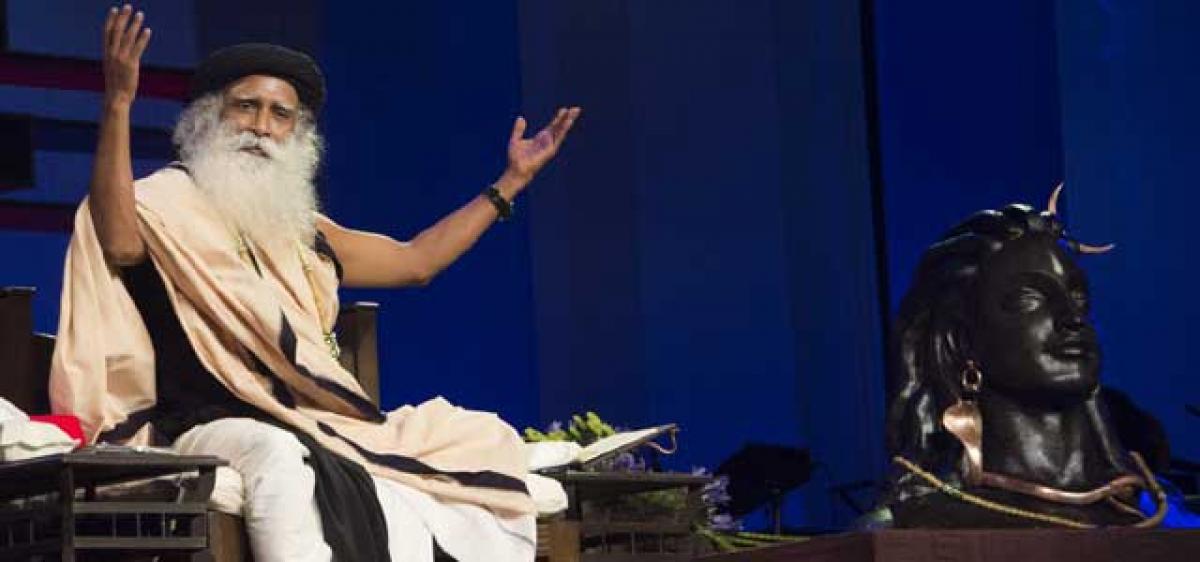Live
- AP Legislative Council Approves Key Bills
- WhatsApp Update: WhatsApp Rolls Out Group Mentions in Status Updates
- Czech PM, European Council President-elect discuss cooperation, EU priorities
- 47 killed, 22 injured in Israeli airstrikes on Lebanon's Baalbek-Hermel
- Chandrababu Advocates for Balanced Governance and Development in Andhra Pradesh
- Our 6 free services in Delhi pinching rivals: Kejriwal at 'Revadi par Charcha' campaign
- Abu Dhabi T10: Jos Buttler shines in debut, lauds England batters after memorable performances
- BCCI releases dates for IPL 2025 to 2027
- Centre releases Rs 448 crore as grant for rural local bodies in Karnataka
- India and Japan bolster defence ties, explore air domain cooperation
Just In

One of the more significant dimensions of Shiva is Natesha – the source of all art forms. There is a Nataraja statue standing at the entrance of the CERN laboratory in Switzerland, one of the most notable physics laboratories in the world. This is because they identified that there is nothing in human culture closer to what they are doing right now.
One of the more significant dimensions of Shiva is Natesha – the source of all art forms. There is a Nataraja statue standing at the entrance of the CERN laboratory in Switzerland, one of the most notable physics laboratories in the world. This is because they identified that there is nothing in human culture closer to what they are doing right now.
Essentially, Shiva identified 84000 postures that the body can take and culled that down to 84 as yogasanas. From that, he gave more fluid expressions to the same.
If it is done with a conscious system, it is called asana. If it is done with poetic grace, it is called classical dance. He explored the mechanics of what the body can do and what happens when you do those things.
And then, when he was in wild abandon, he danced. Others grasped a bit of it and tried to assimilate it as a system.
We need to understand what science is and what technology is. Shiva expounded the science of your existence. But the technology has happened in so many ways.
The world has always looked East when people thought of living well. This is because people always saw this land as a possibility. This land is humanity’s greatest experiment in terms of making an entire culture into a spiritual process.
Whatever you do – whether you conduct your business, raise a family or anything else – your life is essentially about mukti. Ultimate liberation is the only goal.
Indian art forms are very consciously evolved arts, based on an understanding of the mechanics of the human system and the science of how to evolve it to its highest possibility. Music and dance were not for entertainment. They were also a spiritual process.
If you use the postures and mudras in Indian classical dance properly, they lead to meditativeness. Similarly, if you look at a person who is steeped in Indian classical music, they would have become sage-like because if you arrange sounds in a certain pattern, it has a particular impact.
If you use sound patterns properly, it does tremendous things within you and also to the surroundings because physical existence is essentially a complex amalgamation of reverberations or sounds.
So we did not use music to entertain, we used music to dissolve people. Entertainment was not the attitude in life. Everything – even sitting, standing, and eating – was a sadhana or tool to reach a higher level of consciousness.
In the past, classical arts flourished in this land. Unfortunately, we have let them die in the last few centuries. It is time we revived them.
Isha Foundation conducts the Yaksha music festival every year, which offers a platform for artists. But this is something that needs to happen in a widespread manner – not just through one organisation.
It is essential that we invest a certain amount of time and effort in reviving these wonderful arts.

© 2024 Hyderabad Media House Limited/The Hans India. All rights reserved. Powered by hocalwire.com







